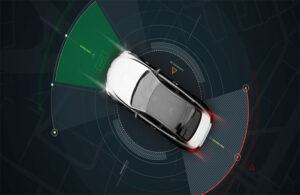 Advancing in the fast-paced era of clean mobility and electric vehicles, automotive HD/imaging radar market is expected to grow exponentially due to its demand in autonomous vehicles.
Advancing in the fast-paced era of clean mobility and electric vehicles, automotive HD/imaging radar market is expected to grow exponentially due to its demand in autonomous vehicles.
The global automotive HD/imaging radar market is predicted to exhibit astonishing growth, exhibiting a CAGR of 23.61% from 2023 to 2033.
Recent report revealed by FMI suggests that the market valuation is likely to hit US$ 10.1 billion in 2023 and US$ 84.11 billion by 2033.
Automotive HD radar is a crucial component of Advanced Driver Assistance Systems (ADAS). Its high precision for range and speed detection plays a critical role in vehicle safety. The sensors alert the driver to avoid any collision, pedestrian, vehicle, or others. The automotive industry has been consistently expanding, owing to improving per capita income levels, and digitalization.
The demand for safety features such as electronic stability control, traction control, lane departure warnings, collision avoidance systems, and others has astronomically risen in recent years. Automakers are innovating product offerings to launch vehicles that comply with government regulations for vehicle safety.
The automotive HD radar market is expanding due to its adoption of Advanced Driver Assistance Systems. The automotive imaging market is experiencing a demand upsurge due to the development of autonomous cars. Autonomous cars use several sensors and cameras to operate. Thus, high-quality imaging is necessary for accurate maneuvering. Additionally, the digitalization of existing and new vehicles has catapulted the demand for HD imaging, thereby boosting the global automotive HD imaging market’s growth prospects.
The growing investments in research and development activities by key market players are expected to augment market development.
Key Takeaways:
- Asia Pacific is likely to dominate the global market sales due to rising disposable income levels and surging automotive sales. India and China are likely to be the key regions accumulating growth in the Asia Pacific.
- The North American market is expected to exhibit modest growth due to the rising popularity of autonomous cars such as Tesla and others. The United States is likely to remain at the forefront due to the presence of key market players.
- The European market is predicted to witness strong growth. The early adoption of ADAS technologies in the United Kingdom and Germany is expected to be the factor promoting the regional market growth.
- The medium-range radar segment is anticipated to hold the lion’s share in the global market during the forecast period.
Recent Developments Observed by FMI:
- In January 2022, NXP launched new imaging radar chips for automated driving and ADAS. The new chips are S32R41 and S32R45. The S32R41 chip is optimized for hands-free partially automated ADAS applications. The S32R45 chip is targeted at L4 and above ADAS applications.
- Renesas launched a portfolio of automotive radar transceivers in November 2022. The new transceivers are designed to cater to the demands of level 3 and higher autonomous driving applications.
- Sabic launched new compounds for automotive radar sensors in December 2020. The two new radar-absorbing compounds were developed to aid manufacturers to eliminate false trigger alarms or actions.

